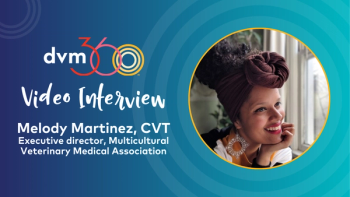
How is Physical Rehab Different with Dogs and Cats?
Mary Ellen Goldberg, BS, LVT, CVT, SRA, CCRA, certified veterinary pain practitioner with VetMedTeam, LLC., compares the different physical rehabilitation approaches toward a dog or a cat.
Mary Ellen Goldberg, BS, LVT, CVT, SRA, CCRA, certified veterinary pain practitioner with VetMedTeam, LLC., compares the different physical rehabilitation approaches toward a dog or a cat.
Interview Transcript (slightly modified for readability)
“When you approach a dog with physical rehabilitation the nature of a dog is to please you, at least most of the time that’s their nature. They are generally either food motivated or they’re willing to please you, they’re happy to be doing something for you. Cats. Cats are cats. Cats are another story. Basically with cats, what you have to do is you want to get them to think it’s their idea—what we’re doing is the cats idea, it’s not my idea. So, you have a lot of playtime where getting them to move, you’re using toys or food and it gets them to stretch or do things that they might not ordinarily be doing, but by playing with them it helps.
With cats, you want to keep the sessions much shorter than you do with dogs. With cats, they are my ADHD little patients, they can’t focus on something for long periods of time. What they do is you have to do it in shorter intervals, and they get bored very quickly so you can’t expect to be doing something for a long time.
Also what you have to do is you have to be confident in your skills. If you’re not, the cat knows it and it’s going to look at you like, “Why do I want to interact with you? You’re scared of me, I’m scared of you, and I don’t really understand what’s going on.” So, cats are a totally different approach than dogs.”
Newsletter
From exam room tips to practice management insights, get trusted veterinary news delivered straight to your inbox—subscribe to dvm360.






